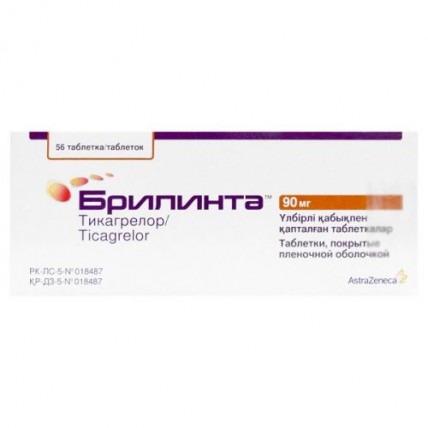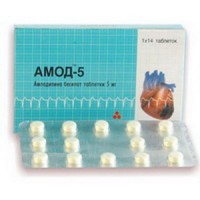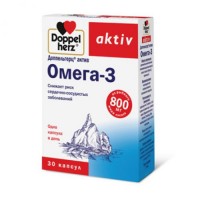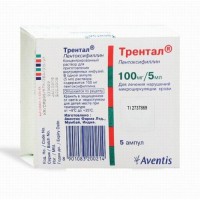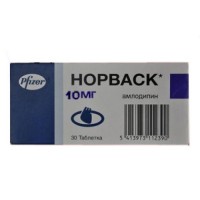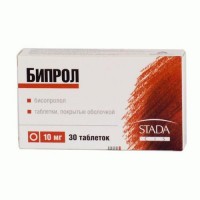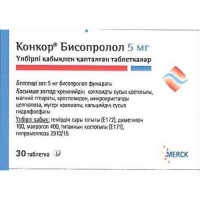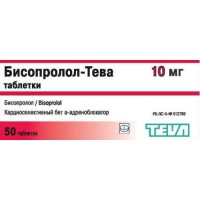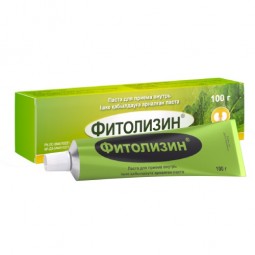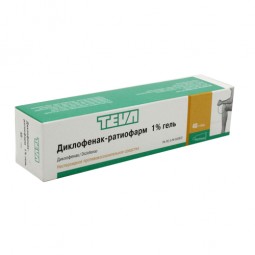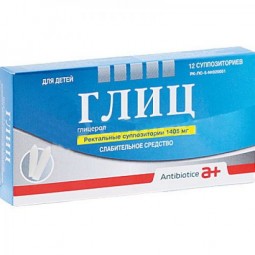Brilinta 56's ™ 90 mg film-coated tablets
- $217.30
The instruction for medical use
of BRILINTA medicine
the Trade name
of Brilint Mezhdunarodnoye the unlicensed
name Ticagrelor Dosage Form
of the Tablet, film coated, 90 mg
Structure
One tablet contains
active agent - ticagrelor of 90 mg,
excipients: Mannitolum, calcium hydrophosphate, sodium krakhmalglikolit, hydroxypropyl cellulose, magnesium stearate,
structure of a cover: gipromelloza 2910, titan dioxide (E171), talc, macrogoal 400, ferrous oxide yellow (E172).
The description
Round, biconvex tablets, film coated yellow color, with an engraving on one party and smooth on another.
Pharmacotherapeutic group
Anticoagulants. Inhibitors of aggregation of thrombocytes.
The code of automatic telephone exchange B01AC24
the Pharmacological
Pharmacokinetics Absorption Ticagrelor properties is quickly absorbed from average tmax about 1.5 hours. Forming of the main metabolite of AR‑C124910XX circulating in blood (also active) of ticagrelor happens quickly to average tmax about 2.5 hours. Cmax and AUC ticagrelor and an active metabolite increases in proportion to a dose in the range of the studied doses (30 1260 mg).
The average absolute bioavailability of ticagrelor is 36% (range from 25.4% to 64.0%). Intake of greasy food does not influence Cmax of ticagrelor or AUC of an active metabolite, but leads to increase in AUC ticagrelor for 21% and to decrease by 22% of Cmax of an active metabolite. These little changes have the minimum clinical importance therefore, it is possible to appoint ticagrelor regardless of meal.
Distribution
the Volume of distribution of ticagrelor in an equilibrium state makes 87.5 l. Ticagrelor and an active metabolite widely contact proteins of blood plasma (& gt, 99.7%).
Metabolism
of CYP3A4 is the main isoenzyme, the main metabolite of ticagrelor is AR-C124910XX which is also active that is confirmed by results of assessment of linking with P2Y12 the ADF-receptor of thrombocytes of in vitro. System exposure of an active metabolite makes about 30-40% of ticagrelor exposure.
Excretion
the Main way of removal of ticagrelor through hepatic metabolism. Generally active metabolite is removed with bile. Average elimination half-life of ticagrelor and an active metabolite made 6.9 hours (range of 4,512,8 hours) and 8.6 hours (range of 6,512,8 hours), respectively.
Special populations of patients
Elderly patients
At elderly patients (aged from 75 years is also more senior) higher exposure of ticagrelor and an active metabolite (Cmax and AUC approximately for 25%) in comparison with young patients is noted. These distinctions are not considered as clinically significant.
Children
Are not present data on use of ticagrelor for children.
A gender
Of women higher exposure of ticagrelor and an active metabolite in comparison with men is noted. These distinctions are not considered as clinically significant.
Ethnic groups
Average bioavailability of drug at Asian patients are 39% higher, than at Caucasians. The bioavailability of the drug Brilinta is 18% lower at patients of negroid race in comparison with patients of europeodiny race. In pharmacological researches the exposure (Cmax and AUC) Brilinta at Japanese was approximately for 40% (20% after adjustment for body weight) is higher, than at Caucasians.
The renal failure
Exposure of ticagrelor and an active metabolite is about 20% lower at patients with a heavy renal failure (clearance of creatinine & lt, 30ml than mines) in comparison with patients with normal function of kidneys. The inhibition was ticagrelor of aggregation of thrombocytes similar in two groups, however the response to therapy more fluctuated at patients with a heavy renal failure. It is not required to adjust a drug dose at patients with a renal failure. There is no information on use of drug for patients on a hemodialysis.
Patients had a liver failure of Cmax and AUC ticagrelor for 12% and 23% above with a liver failure of easy degree in comparison with healthy volunteers, respectively, however the inhibition was ticagrelor of aggregation of thrombocytes similar in two groups. It is not required to adjust a drug dose at patients with a liver failure of easy degree. Ticagrelor researches at patients with a moderate or heavy liver failure were not conducted.
The pharmacodynamics
the Beginning of action
At patients with a stable course of an ischemic heart disease against the background of use of acetylsalicylic acid, Brilint begins to work quickly that is confirmed by results of determination of average value of the inhibition of aggregation of thrombocytes (IAT): in 0.5 hours after reception of a load dose of 180 mg of Brilinta the IAT average value is about 41%, the IAT maximum value of 87.9% - 89.6% is reached in 2-4 hours after administration of drug. At 90% of patients the IAT final value more than 70% are reached in 2 hours after administration of drug. The high inhibition of aggregation of thrombocytes (87%-89%) by Brilinta is supported within 2-8 hours.
The end of action
After decrease in concentration of Brilinta and his active metabolite is lower than the level, necessary for saturation of receptors, IAT gradually goes down with decrease in plasma concentration. As binding by Brilinta reversibly, restoration of function of thrombocytes does not depend on regeneration of a pool of thrombocytes. Brilinta's impact on IAT stops quicker, than at a klopidogrel that is confirmed by the size of recession of action within 4-72 hours after reception of the last dose of drug (see the section Special instructions).
The average final size IAT measured after reception of the last dose of ticagrelor is about 20-30% higher, than at a klopidogrel. However in 24 hours after reception of the last dose of Brilinta percent of inhibition of aggregation of thrombocytes (%IAT) same, as at a klopidogrel, and during the period from 72 hours to 7 days after Brilinta's reception %IAT below, than at a klopidogrel. The %IAT average value in 72 hours (Day 3) after Brilinta's reception is comparable to the %IAT average value in 5 days after reception of a klopidogrel, and %IAT in 5 days after Brilinta's reception is similar to %IAT value in 7 days after reception of a klopidogrel that statistically does not differ from placebo.
Leads data on transition from one drug to other Transition from a klopidogrel to Brilinta to increase in absolute value of IAT by 26.4%, and change of therapy from Brilinta on klopidogret leads to decrease in absolute value of IAT by 24.5%. It is possible to change therapy from a klopidogrel for Brilinta without interruption of antitrombotichesky effect.
The cumulative criterion of the integrated efficiency and safety
Cumulative criterion of the integrated efficiency and safety (death from the cardiovascular reasons, a myocardial infarction, a stroke, or big bleeding in general by definition of the research PLATO) podtvezhdat positive effect of Brilinta (RRR of 8%, ARR of 1.4%, OP 0.92, p=0.0257) within 12 months after development of manifestations of a sharp coronary syndrome.
Indications
- prevention of aterotrombotichesky complications at adult patients with a sharp coronary syndrome (unstable stenocardia, a myocardial infarction without raising of a ST
segment or a myocardial infarction with raising of a ST
segment), in a combination with acetylsalicylic acid (ASA) including the patients receiving medicinal therapy and patients to whom
the Route of administration and doses
For intake executed the transdermal coronary angioplasty (TCA) or aortocoronary shunting (AKS). The drug Brilinta can be taken regardless of meal.
Use of the drug Brilinta it is necessary to begin with a single load dose 180 mg (two tablets on 90 mg) and then to continue reception on 90 mg two times a day.
The patients taking the drug Brilinta have to accept daily acetylsalicylic acid (from 75 mg to 150 mg at constant reception) if there are no specific contraindications.
It is necessary to avoid breaks in therapy. The patient who missed administration of drug of Brilint has to take only one pill of 90 mg (following dose) in the planned time.
Doctors who want to transfer the patient from therapy klopidogrely on the drug Brilinta have to appoint the first dose of the drug Brilinta of 90 mg in 24 hours after reception of the last dose of a klopidogrel.
It is recommended to carry out therapy by the drug Brilinta within, at least, 12 months, except cases of clinical need for early drug withdrawal. Patients with a sharp coronary syndrome have an early cancellation of any antitrombotichesky therapy, including the drug Brilinta, can increase risk of a lethal outcome because of a cardiovascular disease or a myocardial infarction as a result of a basic disease.
Elderly patients
dose adjustment is not required.
Patients with a renal failure
it is not required to adjust a drug dose at patients with a renal failure. There is no information on use of the drug Brilinta for patients on a hemodialysis.
Patients with a liver failure
it is not required to adjust a drug dose at patients with a slight liver failure. Drug Brilinta researches at patients with a moderate or heavy liver failure were not conducted.
Side effects
Undesirable reactions are classified by the frequency of development and the system of bodies. Categories of frequency are defined according to the following symbols: very often (& ge, 1/10), it is frequent (& ge, 1/100 to & lt, 1/10), is not frequent (& ge, 1/1000 to & lt, 1/100), is rare (& ge, 1/10000 to & lt, 1/1000), is very rare (& lt, 1/10000), it is unknown (proceeding from the known data, it cannot be estimated).
Often (& ge, 1/100 to & lt, 1/10)
- dispnoe
- nasal bleeding
- gastrointestinal bleeding
- bleeding of integuments
- a hematoma
- bleedings in the venue of the procedure
not often (& ge, 1/1000 to & lt, 1/100)
- intracraneal hemorrhage
- dizziness, a headache
- eye hemorrhages (intraocular, conjunctival, in a retina)
- a pneumorrhagia
- a hematemesis
- a digestive tract helcomenia
- hemorrhoidal bleeding
- gastritis
- oral cavity bleedings (including bleeding of gums)
- vomiting, diarrhea, nausea, an abdominal cavity pain, dyspepsia
- rash, an itching
- bleeding from urinary tract
- vaginal bleeding (including, a metrorrhagia)
- post-operational bleedings
Seldom (& ge, 1/10000 to & lt, 1/1000)
- a hyperuricemia
- confusion of consciousness
- paresthesia
- ear bleedings
- retroperitoneal bleeding
- a constipation
- a hemarthrosis
- increase in creatinine in blood
- bleeding from a wound surface, posttraumatic bleeding
of the Contraindication
- hypersensitivity to active ingredient or to any excipient
- presence of pathological bleeding
- intracraneal hemorrhage in the anamnesis
- a liver failure of average or heavy degree
- combined use of ticagrelor with powerful CYP3A4 inhibitors (for example, ketokonazol, klaritromitsin, nefazodon, ritonavir and atazanavir) as combined use can lead to significant increase in influence of ticagrelor
- pregnancy and the period of a lactation
Medicinal interactions
of Brilint is, first of all, CYP3A4 substrate and weak CYP3A4 inhibitor. Brilinta is also substrate of the R-glycoprotein and weak inhibitor of the R-glycoprotein and can increase influence of substrates of the R-glycoprotein.
Influence of other medicines on
the drug Brilinta Lekarstvennye preparaty, metaboliziruyemy CYP3A4
CYP3A4 Inhibitors
- Combined use of a ketokonazol with Brilinta leads powerful CYP3A4 inhibitors to increase in Cmax and the area under curve (AUC) of Brilinta respectively by 2.4 times and 7.3 times. Cmax and the area under curve (AUC) of an active metabolite decreased by 89% and 56%, respectively. It is possible to assume that other powerful CYP3A4 inhibitors (klaritromitsin, nefazodon, ritonavir and atazanavir) have similar effects and their combined use with the drug Brilinta contraindicated.
- Combined use of diltiazem with Brilinta leads moderate CYP3A4 inhibitors to increase in Cmax of ticagrelor by 69%, and the areas under curve (AUC) by 2.7 times, and to reduction of Cmax of an active metabolite by 38% without change of the area under curve (AUC). Brilinta does not influence diltiazem levels in blood plasma. It is possible to assume that other moderate CYP3A4 inhibitors (for example, amprenavir, an aprepitant, erythromycin and flukonazol) have similar effects and can be applied in common in the same degree with the drug Brilinta.
Combined use of rifampicin with Brilinta leads the inductors CYP3A to decrease in Cmax and the area under curve (AUC) of Brilinta for 73% and 86%, respectively. Cmax of an active metabolite was left without change, and the areas under curve (AUC) decreased by 46%, respectively. It is possible to assume that other inductors CYP3A (for example, dexamethasone, Phenytoinum, carbamazepine and phenobarbital) will also reduce drug Brilinta influence. Combined use of Brilinta with the powerful inductors CYP3A can reduce influence and Brilinta's efficiency.
Other
Clinical trials of pharmacological interactions show that combined use of Brilinta with gaperiny, enoksapariny and acetylsalicylic acid or desmopressin has no impact on Brilinta's pharmacokinetics or his active metabolite, or on ADF-indutsirovannuyu aggregation of thrombocytes in comparison with reception only of Brilinta. In the presence of clinical indications, medicines which change a hemostasis should be applied with care together with the drug Brilinta.
There are no data on combined use of the drug Brilinta with powerful inhibitors of the R-glycoprotein (for example, verapamil, quinidine, cyclosporine) which can increase Brilinta's influence. In the presence of clinical indications, their combined use demands respect for care.
Influence of the drug Brilinta on other medicines
Medicines, metaboliziruyemy CYP3A4
Simvastatin leads combined use of ticagrelor with simvastatiny to increase in Cmax of a simvastatin by 81%, and the areas under curve (AUC) - for 56%, and to increase in Cmax of simvastatinovy acid by 64%, and the areas under curve (AUC) for 52%, in some separate cases with increase by 2 3 times. Combined use of Brilinta and a simvastatin in a dose can result more than 40 mg a day in side effects of a simvastatin, and therefore, before use it is necessary to compare it with potential advantage. Simvastatin does not influence Brilinta's levels in blood plasma. The drug Brilinta can have similar impact on lovastatin. Combined use of the drug Brilinta with simvastatiny or lovastatiny in a dose more than 40 mg is not recommended.
Atorvastatin leads combined use of an atorvastatin and Brilinta to increase in Cmax of atorvastatinovy acid by 23%, and the areas under curve (AUC) for 36%. Similar increase in the area under curve (AUC) and Cmax is observed for all metabolites of atorvastatinovy acid. These increases are not considered as clinically significant.
Brilinta is weak CYP3A4 inhibitor. Combined use of the drug Brilinta and CYP3A4 substrates with a narrow therapeutic range (for example, tsizaprid or ergot alkaloids) is not recommended as Brilinta can increase influence of these medicines.
Medicines, metaboliziruyemy CYP2C9
Combined use of the drug Brilinta with tolbutamide does not change levels of any of two medicines in blood plasma, it allows to assume that Brilinta is not CYP2C9 inhibitor, and the mediated metabolism of medicines, such as warfarin and tolbutamide will hardly influence CYP2C9.
Combined use of the drug Brilinta with levonorgestrel and ethinylestradiol leads oral contraceptive means to increase in influence of ethinylestradiol approximately for 20%, but does not influence levonorgestrel pharmacokinetics. At a concomitant use of levonorgestrel and ethinylestradiol with the drug Brilinta clinically significant influence on efficiency of oral contraceptive means is not supposed.
Combined use with the drug Brilinta leads substrates of a P-glycoprotein (P-gp) (including, digoxin, cyclosporine) to increase in Cmax of digoxin by 75%, and the areas under curve (AUC) for 28%. The average minimum levels of digoxin increased approximately by 30% at combined use with Brilinta, in some separate cases the maximum increased to 2 times. In the presence of digoxin, it was not influenced Cmax and the area under curve (AUC) of Brilinta and his active metabolite. Therefore, at combined use of the drug Brilinta about the R-glycoprotein dependent medicines with a narrow therapeutic range, such as digoxin or cyclosporine, is recommended the corresponding clinical and/or laboratory monitoring.
Other options of the accompanying treatment
the Medicines known as
the asystolias of ventricles causing bradycardia Because of observations mainly of symptomless episodes and bradycardia, it is necessary to be careful at combined use of the drug Brilinta with medicines which are known as causing bradycardia.
Combined use of the drug Brilinta with heparin, enoksapariny or desmopressin did not influence indicators of the activated partial tromboplastinovy time (aPTT), the activated time of coagulation (ACT) or a factor of Xa. However, because of potential pharmakodinamichesky interactions, it is necessary to be careful at combined use of the drug Brilinta with medicines which, as we know, change a hemostasis.
In connection with the messages about pathological hemorrhages of integuments at intake of selective serotonin reuptake inhibitors (SSRIs) (for example, paroksetin, sertraline and to tsitalopra), it is necessary to be careful at intake of selective serotonin reuptake inhibitors (SSRIs) with the drug Brilinta as it can lead to increase in risk of bleedings.
The special
instructions Risk of Developing Bleeding
As well as at use of other antitrombotichesky drugs, when prescribing the drug Brilinta it is necessary to estimate a ratio of advantage of prevention of trombotichesky events and risk at patients with the increased risk of developing bleedings.
It is necessary to take the following into account:
- Predisposition of patients to development of bleeding (for example, in connection with recently traumatized, recently performed operation, active or recent gastrointestinal bleeding or intracraneal hemorrhage, or a heavy liver failure).
- The accompanying use of drugs which can increase risk of developing bleeding (for example, the non-steroidal anti-inflammatory drugs, oral anticoagulants and/or fibrinolitik accepted within 24 hours before administration of drug of Brilint).
There are no data on use of the drug Brilinta and haemo static efficiency of transfusions by thrombocytes, Brilinta can inhibit transfuzirovanny thrombocytes in blood. As at the accompanying use of the drug Brilinta and desmopressin the standardized bleeding time did not decrease, it is improbable that desmopressin will effectively stop bleeding.
Anti-fibrinolytic therapy (aminocapronic acid or traneksamovy acid) and/or recombinant factor of VIIa can strengthen a hemostasis. After establishment of the cause of bleeding and its stopping it is possible to resume therapy by the drug Brilinta.
Surgeries
If the patient needs surgical intervention, then doctors have to consider a clinical profile of each patient and also estimate a ratio of advantage risk of continuation of antitrombotichesky therapy when determining time of phase-out of the drug Brilinta.
If the patient is exposed to planned operation and the antitrombotichesky effect is not desirable, then therapy by the drug Brilinta should be stopped in 5 days prior to operation.
Patients with risk of developing bradycardia
Due to the identification in earlier conducted clinical trial, generally asymptomatic ventricular asystolias, patients with the increased risk of developing bradycardia (for example, patients without pacemaker for whom the sick sinus syndrome is diagnosed atrioventricular block of the 2nd or 3rd degree, the syncope connected with bradycardia) were not included in the main research for assessment of safety and efficiency of the drug Brilinta. Therefore, in connection with limited clinical experience of use of drug for these patients, such patients are recommended to appoint the drug Brilinta with care.
An asthma
the Asthma noted at drug Brilinta use, usually weak or moderate on the intensity, often passes in process of therapy continuation by drug. If at the patient the new episode of an asthma developed, an asthma remains or worsened during drug Brilinta use, then it is necessary to exclude other causes of short wind, such as presence of a basic disease which can demand treatment. If it is established that an asthma is caused by therapy by the drug Brilinta, administration of drug of Brilint should be stopped.
Increase in creatinine
during the Brilinta drug treatment the levels of creatinine can increase. The mechanism did not become clear. Renal function should be checked in one month, and subsequently according to routine medical practice, paying special attention to patients & ge, 75 years, patients with an average/heavy renal failure and on those who received the accompanying treatment by blockers of receptors of angiotensin-II (ARB).
Increase in uric acid
It is necessary to observe precautionary measures at Brilinta's reception by patients who in the anamnesis have a hyperuricemia or gouty arthritis. As a precautionary measure, Brilinta's use at patients with an urate nephropathy is not recommended.
Others
It is necessary to avoid combined use of the drug Brilinta with powerful CYP3A4 inhibitors (for example, ketokonazol, klaritromitsin, nefazadon, ritonavir and atazanavir) as combined use can lead to considerable strengthening of influence of the drug Brilinta.
It is necessary to avoid combined use of Brilinta with the powerful inductors CYP3A4 (for example, rifampicin, dexamethasone, Phenytoinum, carbamazepine and phenobarbital), so combined use can lead to considerable decrease in influence and Brilinta's efficiency.
Combined use of the drug Brilinta and CYP3A4 substrates with a narrow therapeutic range (for example, tsizaprid and ergot alkaloids) is not recommended as Brilinta can increase influence of these medicines. Combined use of the drug Brilinta with simvastatiny or lovastatiny in a dose more, than 40 mg is not recommended.
At combined use of digoxin and the drug Brilinta, careful clinical and laboratory monitoring is recommended.
Data on combined use of the drug Brilinta with powerful inhibitors of the R-glycoprotein (P-gp) (for example, verapamil, quinidine, cyclosporine) which can increase Brilinta's influence are not available. If it is impossible to avoid combined use, then at its use it is necessary to observe precautionary measures
the therapy Termination
In case of need to stop use of the drug Brilinta risk of development of cardiovascular events increases. It is necessary to avoid the premature termination of therapy. If it is necessary to stop temporarily therapy by the drug Brilinta in connection with development of the undesirable phenomenon, it is necessary to resume as soon as possible therapy if the advantage of drug outweighs risks from development of the undesirable phenomenon or if the undesirable phenomenon was resolved.
Children
Safety and efficiency of the drug Brilinta at children are younger than 18 years is not established.
The feature of influence of medicine on ability to run the vehicle or potentially dangerous
Brilinta mechanisms does not affect ability to run transport and mechanisms, however, at treatment of a sharp coronary syndrome the dizziness and confusion of consciousness were observed. Therefore patients with such symptoms should drive motor transport with care or to work with mechanisms.
Overdose
Symptoms: Bleeding is expected pharmacological action of overdose by the drug Brilinta therefore at development of bleeding it is necessary to hold the relevant supporting activities. Other clinically significant side reactions which can meet at overdose include dispnoe and episodes of a ventricular asystolia.
Treatment: specific antidote does not exist, in case of overdose the treatment has to be symptomatic. Brilinta is not brought at a hemodialysis. The general maintenance therapy, observation of the patient and control of function of vitals and systems is recommended (ECG monitoring).
A form of release and packing
On 14 tablets in the blister packing from a film of the polyvinylchloride, polyvinyldichloride and printing aluminum foil varnished.
On 4 blisters together with the instruction for medical use in the state and Russian languages put in a pack from cardboard.
To Store storage conditions at a temperature not over 30C.
To store out of children's reach!
3 years
not to apply a period of storage after the expiration date specified on packing.
Prescription status
According to the prescription
the Producer AstraZeneka of AB, S-151 85 Sodertalje, Sweden
the Packer AstraZeneka of AB, Sweden
the Owner of the registration certificate
of AstraZeneka YuK Limited, Great Britain
the Address of the organization accepting claims for territories of the Republic of Kazakhstan from consumers on quality of products (goods)
of Predstavitelstvo ZAC AstraZeneka UK Limited
Phone number: +7 727 226 25 30, fax: +7 727 226 25 29
e-mail:
Brilint's Marina.Chukalina@astrazeneca.com - a trademark, the property of group of companies AstraZeneka.
To develop
of BRILINTA medicine
the Trade name
of Brilint Mezhdunarodnoye the unlicensed
name Ticagrelor Dosage Form
of the Tablet, film coated, 90 mg
Structure
One tablet contains
active agent - ticagrelor of 90 mg,
excipients: Mannitolum, calcium hydrophosphate, sodium krakhmalglikolit, hydroxypropyl cellulose, magnesium stearate,
structure of a cover: gipromelloza 2910, titan dioxide (E171), talc, macrogoal 400, ferrous oxide yellow (E172).
The description
Round, biconvex tablets, film coated yellow color, with an engraving on one party and smooth on another.
Pharmacotherapeutic group
Anticoagulants. Inhibitors of aggregation of thrombocytes.
The code of automatic telephone exchange B01AC24
the Pharmacological
Pharmacokinetics Absorption Ticagrelor properties is quickly absorbed from average tmax about 1.5 hours. Forming of the main metabolite of AR‑C124910XX circulating in blood (also active) of ticagrelor happens quickly to average tmax about 2.5 hours. Cmax and AUC ticagrelor and an active metabolite increases in proportion to a dose in the range of the studied doses (30 1260 mg).
The average absolute bioavailability of ticagrelor is 36% (range from 25.4% to 64.0%). Intake of greasy food does not influence Cmax of ticagrelor or AUC of an active metabolite, but leads to increase in AUC ticagrelor for 21% and to decrease by 22% of Cmax of an active metabolite. These little changes have the minimum clinical importance therefore, it is possible to appoint ticagrelor regardless of meal.
Distribution
the Volume of distribution of ticagrelor in an equilibrium state makes 87.5 l. Ticagrelor and an active metabolite widely contact proteins of blood plasma (& gt, 99.7%).
Metabolism
of CYP3A4 is the main isoenzyme, the main metabolite of ticagrelor is AR-C124910XX which is also active that is confirmed by results of assessment of linking with P2Y12 the ADF-receptor of thrombocytes of in vitro. System exposure of an active metabolite makes about 30-40% of ticagrelor exposure.
Excretion
the Main way of removal of ticagrelor through hepatic metabolism. Generally active metabolite is removed with bile. Average elimination half-life of ticagrelor and an active metabolite made 6.9 hours (range of 4,512,8 hours) and 8.6 hours (range of 6,512,8 hours), respectively.
Special populations of patients
Elderly patients
At elderly patients (aged from 75 years is also more senior) higher exposure of ticagrelor and an active metabolite (Cmax and AUC approximately for 25%) in comparison with young patients is noted. These distinctions are not considered as clinically significant.
Children
Are not present data on use of ticagrelor for children.
A gender
Of women higher exposure of ticagrelor and an active metabolite in comparison with men is noted. These distinctions are not considered as clinically significant.
Ethnic groups
Average bioavailability of drug at Asian patients are 39% higher, than at Caucasians. The bioavailability of the drug Brilinta is 18% lower at patients of negroid race in comparison with patients of europeodiny race. In pharmacological researches the exposure (Cmax and AUC) Brilinta at Japanese was approximately for 40% (20% after adjustment for body weight) is higher, than at Caucasians.
The renal failure
Exposure of ticagrelor and an active metabolite is about 20% lower at patients with a heavy renal failure (clearance of creatinine & lt, 30ml than mines) in comparison with patients with normal function of kidneys. The inhibition was ticagrelor of aggregation of thrombocytes similar in two groups, however the response to therapy more fluctuated at patients with a heavy renal failure. It is not required to adjust a drug dose at patients with a renal failure. There is no information on use of drug for patients on a hemodialysis.
Patients had a liver failure of Cmax and AUC ticagrelor for 12% and 23% above with a liver failure of easy degree in comparison with healthy volunteers, respectively, however the inhibition was ticagrelor of aggregation of thrombocytes similar in two groups. It is not required to adjust a drug dose at patients with a liver failure of easy degree. Ticagrelor researches at patients with a moderate or heavy liver failure were not conducted.
The pharmacodynamics
the Beginning of action
At patients with a stable course of an ischemic heart disease against the background of use of acetylsalicylic acid, Brilint begins to work quickly that is confirmed by results of determination of average value of the inhibition of aggregation of thrombocytes (IAT): in 0.5 hours after reception of a load dose of 180 mg of Brilinta the IAT average value is about 41%, the IAT maximum value of 87.9% - 89.6% is reached in 2-4 hours after administration of drug. At 90% of patients the IAT final value more than 70% are reached in 2 hours after administration of drug. The high inhibition of aggregation of thrombocytes (87%-89%) by Brilinta is supported within 2-8 hours.
The end of action
After decrease in concentration of Brilinta and his active metabolite is lower than the level, necessary for saturation of receptors, IAT gradually goes down with decrease in plasma concentration. As binding by Brilinta reversibly, restoration of function of thrombocytes does not depend on regeneration of a pool of thrombocytes. Brilinta's impact on IAT stops quicker, than at a klopidogrel that is confirmed by the size of recession of action within 4-72 hours after reception of the last dose of drug (see the section Special instructions).
The average final size IAT measured after reception of the last dose of ticagrelor is about 20-30% higher, than at a klopidogrel. However in 24 hours after reception of the last dose of Brilinta percent of inhibition of aggregation of thrombocytes (%IAT) same, as at a klopidogrel, and during the period from 72 hours to 7 days after Brilinta's reception %IAT below, than at a klopidogrel. The %IAT average value in 72 hours (Day 3) after Brilinta's reception is comparable to the %IAT average value in 5 days after reception of a klopidogrel, and %IAT in 5 days after Brilinta's reception is similar to %IAT value in 7 days after reception of a klopidogrel that statistically does not differ from placebo.
Leads data on transition from one drug to other Transition from a klopidogrel to Brilinta to increase in absolute value of IAT by 26.4%, and change of therapy from Brilinta on klopidogret leads to decrease in absolute value of IAT by 24.5%. It is possible to change therapy from a klopidogrel for Brilinta without interruption of antitrombotichesky effect.
The cumulative criterion of the integrated efficiency and safety
Cumulative criterion of the integrated efficiency and safety (death from the cardiovascular reasons, a myocardial infarction, a stroke, or big bleeding in general by definition of the research PLATO) podtvezhdat positive effect of Brilinta (RRR of 8%, ARR of 1.4%, OP 0.92, p=0.0257) within 12 months after development of manifestations of a sharp coronary syndrome.
Indications
- prevention of aterotrombotichesky complications at adult patients with a sharp coronary syndrome (unstable stenocardia, a myocardial infarction without raising of a ST
segment or a myocardial infarction with raising of a ST
segment), in a combination with acetylsalicylic acid (ASA) including the patients receiving medicinal therapy and patients to whom
the Route of administration and doses
For intake executed the transdermal coronary angioplasty (TCA) or aortocoronary shunting (AKS). The drug Brilinta can be taken regardless of meal.
Use of the drug Brilinta it is necessary to begin with a single load dose 180 mg (two tablets on 90 mg) and then to continue reception on 90 mg two times a day.
The patients taking the drug Brilinta have to accept daily acetylsalicylic acid (from 75 mg to 150 mg at constant reception) if there are no specific contraindications.
It is necessary to avoid breaks in therapy. The patient who missed administration of drug of Brilint has to take only one pill of 90 mg (following dose) in the planned time.
Doctors who want to transfer the patient from therapy klopidogrely on the drug Brilinta have to appoint the first dose of the drug Brilinta of 90 mg in 24 hours after reception of the last dose of a klopidogrel.
It is recommended to carry out therapy by the drug Brilinta within, at least, 12 months, except cases of clinical need for early drug withdrawal. Patients with a sharp coronary syndrome have an early cancellation of any antitrombotichesky therapy, including the drug Brilinta, can increase risk of a lethal outcome because of a cardiovascular disease or a myocardial infarction as a result of a basic disease.
Elderly patients
dose adjustment is not required.
Patients with a renal failure
it is not required to adjust a drug dose at patients with a renal failure. There is no information on use of the drug Brilinta for patients on a hemodialysis.
Patients with a liver failure
it is not required to adjust a drug dose at patients with a slight liver failure. Drug Brilinta researches at patients with a moderate or heavy liver failure were not conducted.
Side effects
Undesirable reactions are classified by the frequency of development and the system of bodies. Categories of frequency are defined according to the following symbols: very often (& ge, 1/10), it is frequent (& ge, 1/100 to & lt, 1/10), is not frequent (& ge, 1/1000 to & lt, 1/100), is rare (& ge, 1/10000 to & lt, 1/1000), is very rare (& lt, 1/10000), it is unknown (proceeding from the known data, it cannot be estimated).
Often (& ge, 1/100 to & lt, 1/10)
- dispnoe
- nasal bleeding
- gastrointestinal bleeding
- bleeding of integuments
- a hematoma
- bleedings in the venue of the procedure
not often (& ge, 1/1000 to & lt, 1/100)
- intracraneal hemorrhage
- dizziness, a headache
- eye hemorrhages (intraocular, conjunctival, in a retina)
- a pneumorrhagia
- a hematemesis
- a digestive tract helcomenia
- hemorrhoidal bleeding
- gastritis
- oral cavity bleedings (including bleeding of gums)
- vomiting, diarrhea, nausea, an abdominal cavity pain, dyspepsia
- rash, an itching
- bleeding from urinary tract
- vaginal bleeding (including, a metrorrhagia)
- post-operational bleedings
Seldom (& ge, 1/10000 to & lt, 1/1000)
- a hyperuricemia
- confusion of consciousness
- paresthesia
- ear bleedings
- retroperitoneal bleeding
- a constipation
- a hemarthrosis
- increase in creatinine in blood
- bleeding from a wound surface, posttraumatic bleeding
of the Contraindication
- hypersensitivity to active ingredient or to any excipient
- presence of pathological bleeding
- intracraneal hemorrhage in the anamnesis
- a liver failure of average or heavy degree
- combined use of ticagrelor with powerful CYP3A4 inhibitors (for example, ketokonazol, klaritromitsin, nefazodon, ritonavir and atazanavir) as combined use can lead to significant increase in influence of ticagrelor
- pregnancy and the period of a lactation
Medicinal interactions
of Brilint is, first of all, CYP3A4 substrate and weak CYP3A4 inhibitor. Brilinta is also substrate of the R-glycoprotein and weak inhibitor of the R-glycoprotein and can increase influence of substrates of the R-glycoprotein.
Influence of other medicines on
the drug Brilinta Lekarstvennye preparaty, metaboliziruyemy CYP3A4
CYP3A4 Inhibitors
- Combined use of a ketokonazol with Brilinta leads powerful CYP3A4 inhibitors to increase in Cmax and the area under curve (AUC) of Brilinta respectively by 2.4 times and 7.3 times. Cmax and the area under curve (AUC) of an active metabolite decreased by 89% and 56%, respectively. It is possible to assume that other powerful CYP3A4 inhibitors (klaritromitsin, nefazodon, ritonavir and atazanavir) have similar effects and their combined use with the drug Brilinta contraindicated.
- Combined use of diltiazem with Brilinta leads moderate CYP3A4 inhibitors to increase in Cmax of ticagrelor by 69%, and the areas under curve (AUC) by 2.7 times, and to reduction of Cmax of an active metabolite by 38% without change of the area under curve (AUC). Brilinta does not influence diltiazem levels in blood plasma. It is possible to assume that other moderate CYP3A4 inhibitors (for example, amprenavir, an aprepitant, erythromycin and flukonazol) have similar effects and can be applied in common in the same degree with the drug Brilinta.
Combined use of rifampicin with Brilinta leads the inductors CYP3A to decrease in Cmax and the area under curve (AUC) of Brilinta for 73% and 86%, respectively. Cmax of an active metabolite was left without change, and the areas under curve (AUC) decreased by 46%, respectively. It is possible to assume that other inductors CYP3A (for example, dexamethasone, Phenytoinum, carbamazepine and phenobarbital) will also reduce drug Brilinta influence. Combined use of Brilinta with the powerful inductors CYP3A can reduce influence and Brilinta's efficiency.
Other
Clinical trials of pharmacological interactions show that combined use of Brilinta with gaperiny, enoksapariny and acetylsalicylic acid or desmopressin has no impact on Brilinta's pharmacokinetics or his active metabolite, or on ADF-indutsirovannuyu aggregation of thrombocytes in comparison with reception only of Brilinta. In the presence of clinical indications, medicines which change a hemostasis should be applied with care together with the drug Brilinta.
There are no data on combined use of the drug Brilinta with powerful inhibitors of the R-glycoprotein (for example, verapamil, quinidine, cyclosporine) which can increase Brilinta's influence. In the presence of clinical indications, their combined use demands respect for care.
Influence of the drug Brilinta on other medicines
Medicines, metaboliziruyemy CYP3A4
Simvastatin leads combined use of ticagrelor with simvastatiny to increase in Cmax of a simvastatin by 81%, and the areas under curve (AUC) - for 56%, and to increase in Cmax of simvastatinovy acid by 64%, and the areas under curve (AUC) for 52%, in some separate cases with increase by 2 3 times. Combined use of Brilinta and a simvastatin in a dose can result more than 40 mg a day in side effects of a simvastatin, and therefore, before use it is necessary to compare it with potential advantage. Simvastatin does not influence Brilinta's levels in blood plasma. The drug Brilinta can have similar impact on lovastatin. Combined use of the drug Brilinta with simvastatiny or lovastatiny in a dose more than 40 mg is not recommended.
Atorvastatin leads combined use of an atorvastatin and Brilinta to increase in Cmax of atorvastatinovy acid by 23%, and the areas under curve (AUC) for 36%. Similar increase in the area under curve (AUC) and Cmax is observed for all metabolites of atorvastatinovy acid. These increases are not considered as clinically significant.
Brilinta is weak CYP3A4 inhibitor. Combined use of the drug Brilinta and CYP3A4 substrates with a narrow therapeutic range (for example, tsizaprid or ergot alkaloids) is not recommended as Brilinta can increase influence of these medicines.
Medicines, metaboliziruyemy CYP2C9
Combined use of the drug Brilinta with tolbutamide does not change levels of any of two medicines in blood plasma, it allows to assume that Brilinta is not CYP2C9 inhibitor, and the mediated metabolism of medicines, such as warfarin and tolbutamide will hardly influence CYP2C9.
Combined use of the drug Brilinta with levonorgestrel and ethinylestradiol leads oral contraceptive means to increase in influence of ethinylestradiol approximately for 20%, but does not influence levonorgestrel pharmacokinetics. At a concomitant use of levonorgestrel and ethinylestradiol with the drug Brilinta clinically significant influence on efficiency of oral contraceptive means is not supposed.
Combined use with the drug Brilinta leads substrates of a P-glycoprotein (P-gp) (including, digoxin, cyclosporine) to increase in Cmax of digoxin by 75%, and the areas under curve (AUC) for 28%. The average minimum levels of digoxin increased approximately by 30% at combined use with Brilinta, in some separate cases the maximum increased to 2 times. In the presence of digoxin, it was not influenced Cmax and the area under curve (AUC) of Brilinta and his active metabolite. Therefore, at combined use of the drug Brilinta about the R-glycoprotein dependent medicines with a narrow therapeutic range, such as digoxin or cyclosporine, is recommended the corresponding clinical and/or laboratory monitoring.
Other options of the accompanying treatment
the Medicines known as
the asystolias of ventricles causing bradycardia Because of observations mainly of symptomless episodes and bradycardia, it is necessary to be careful at combined use of the drug Brilinta with medicines which are known as causing bradycardia.
Combined use of the drug Brilinta with heparin, enoksapariny or desmopressin did not influence indicators of the activated partial tromboplastinovy time (aPTT), the activated time of coagulation (ACT) or a factor of Xa. However, because of potential pharmakodinamichesky interactions, it is necessary to be careful at combined use of the drug Brilinta with medicines which, as we know, change a hemostasis.
In connection with the messages about pathological hemorrhages of integuments at intake of selective serotonin reuptake inhibitors (SSRIs) (for example, paroksetin, sertraline and to tsitalopra), it is necessary to be careful at intake of selective serotonin reuptake inhibitors (SSRIs) with the drug Brilinta as it can lead to increase in risk of bleedings.
The special
instructions Risk of Developing Bleeding
As well as at use of other antitrombotichesky drugs, when prescribing the drug Brilinta it is necessary to estimate a ratio of advantage of prevention of trombotichesky events and risk at patients with the increased risk of developing bleedings.
It is necessary to take the following into account:
- Predisposition of patients to development of bleeding (for example, in connection with recently traumatized, recently performed operation, active or recent gastrointestinal bleeding or intracraneal hemorrhage, or a heavy liver failure).
- The accompanying use of drugs which can increase risk of developing bleeding (for example, the non-steroidal anti-inflammatory drugs, oral anticoagulants and/or fibrinolitik accepted within 24 hours before administration of drug of Brilint).
There are no data on use of the drug Brilinta and haemo static efficiency of transfusions by thrombocytes, Brilinta can inhibit transfuzirovanny thrombocytes in blood. As at the accompanying use of the drug Brilinta and desmopressin the standardized bleeding time did not decrease, it is improbable that desmopressin will effectively stop bleeding.
Anti-fibrinolytic therapy (aminocapronic acid or traneksamovy acid) and/or recombinant factor of VIIa can strengthen a hemostasis. After establishment of the cause of bleeding and its stopping it is possible to resume therapy by the drug Brilinta.
Surgeries
If the patient needs surgical intervention, then doctors have to consider a clinical profile of each patient and also estimate a ratio of advantage risk of continuation of antitrombotichesky therapy when determining time of phase-out of the drug Brilinta.
If the patient is exposed to planned operation and the antitrombotichesky effect is not desirable, then therapy by the drug Brilinta should be stopped in 5 days prior to operation.
Patients with risk of developing bradycardia
Due to the identification in earlier conducted clinical trial, generally asymptomatic ventricular asystolias, patients with the increased risk of developing bradycardia (for example, patients without pacemaker for whom the sick sinus syndrome is diagnosed atrioventricular block of the 2nd or 3rd degree, the syncope connected with bradycardia) were not included in the main research for assessment of safety and efficiency of the drug Brilinta. Therefore, in connection with limited clinical experience of use of drug for these patients, such patients are recommended to appoint the drug Brilinta with care.
An asthma
the Asthma noted at drug Brilinta use, usually weak or moderate on the intensity, often passes in process of therapy continuation by drug. If at the patient the new episode of an asthma developed, an asthma remains or worsened during drug Brilinta use, then it is necessary to exclude other causes of short wind, such as presence of a basic disease which can demand treatment. If it is established that an asthma is caused by therapy by the drug Brilinta, administration of drug of Brilint should be stopped.
Increase in creatinine
during the Brilinta drug treatment the levels of creatinine can increase. The mechanism did not become clear. Renal function should be checked in one month, and subsequently according to routine medical practice, paying special attention to patients & ge, 75 years, patients with an average/heavy renal failure and on those who received the accompanying treatment by blockers of receptors of angiotensin-II (ARB).
Increase in uric acid
It is necessary to observe precautionary measures at Brilinta's reception by patients who in the anamnesis have a hyperuricemia or gouty arthritis. As a precautionary measure, Brilinta's use at patients with an urate nephropathy is not recommended.
Others
It is necessary to avoid combined use of the drug Brilinta with powerful CYP3A4 inhibitors (for example, ketokonazol, klaritromitsin, nefazadon, ritonavir and atazanavir) as combined use can lead to considerable strengthening of influence of the drug Brilinta.
It is necessary to avoid combined use of Brilinta with the powerful inductors CYP3A4 (for example, rifampicin, dexamethasone, Phenytoinum, carbamazepine and phenobarbital), so combined use can lead to considerable decrease in influence and Brilinta's efficiency.
Combined use of the drug Brilinta and CYP3A4 substrates with a narrow therapeutic range (for example, tsizaprid and ergot alkaloids) is not recommended as Brilinta can increase influence of these medicines. Combined use of the drug Brilinta with simvastatiny or lovastatiny in a dose more, than 40 mg is not recommended.
At combined use of digoxin and the drug Brilinta, careful clinical and laboratory monitoring is recommended.
Data on combined use of the drug Brilinta with powerful inhibitors of the R-glycoprotein (P-gp) (for example, verapamil, quinidine, cyclosporine) which can increase Brilinta's influence are not available. If it is impossible to avoid combined use, then at its use it is necessary to observe precautionary measures
the therapy Termination
In case of need to stop use of the drug Brilinta risk of development of cardiovascular events increases. It is necessary to avoid the premature termination of therapy. If it is necessary to stop temporarily therapy by the drug Brilinta in connection with development of the undesirable phenomenon, it is necessary to resume as soon as possible therapy if the advantage of drug outweighs risks from development of the undesirable phenomenon or if the undesirable phenomenon was resolved.
Children
Safety and efficiency of the drug Brilinta at children are younger than 18 years is not established.
The feature of influence of medicine on ability to run the vehicle or potentially dangerous
Brilinta mechanisms does not affect ability to run transport and mechanisms, however, at treatment of a sharp coronary syndrome the dizziness and confusion of consciousness were observed. Therefore patients with such symptoms should drive motor transport with care or to work with mechanisms.
Overdose
Symptoms: Bleeding is expected pharmacological action of overdose by the drug Brilinta therefore at development of bleeding it is necessary to hold the relevant supporting activities. Other clinically significant side reactions which can meet at overdose include dispnoe and episodes of a ventricular asystolia.
Treatment: specific antidote does not exist, in case of overdose the treatment has to be symptomatic. Brilinta is not brought at a hemodialysis. The general maintenance therapy, observation of the patient and control of function of vitals and systems is recommended (ECG monitoring).
A form of release and packing
On 14 tablets in the blister packing from a film of the polyvinylchloride, polyvinyldichloride and printing aluminum foil varnished.
On 4 blisters together with the instruction for medical use in the state and Russian languages put in a pack from cardboard.
To Store storage conditions at a temperature not over 30C.
To store out of children's reach!
3 years
not to apply a period of storage after the expiration date specified on packing.
Prescription status
According to the prescription
the Producer AstraZeneka of AB, S-151 85 Sodertalje, Sweden
the Packer AstraZeneka of AB, Sweden
the Owner of the registration certificate
of AstraZeneka YuK Limited, Great Britain
the Address of the organization accepting claims for territories of the Republic of Kazakhstan from consumers on quality of products (goods)
of Predstavitelstvo ZAC AstraZeneka UK Limited
Phone number: +7 727 226 25 30, fax: +7 727 226 25 29
e-mail:
Brilint's Marina.Chukalina@astrazeneca.com - a trademark, the property of group of companies AstraZeneka.
To develop
